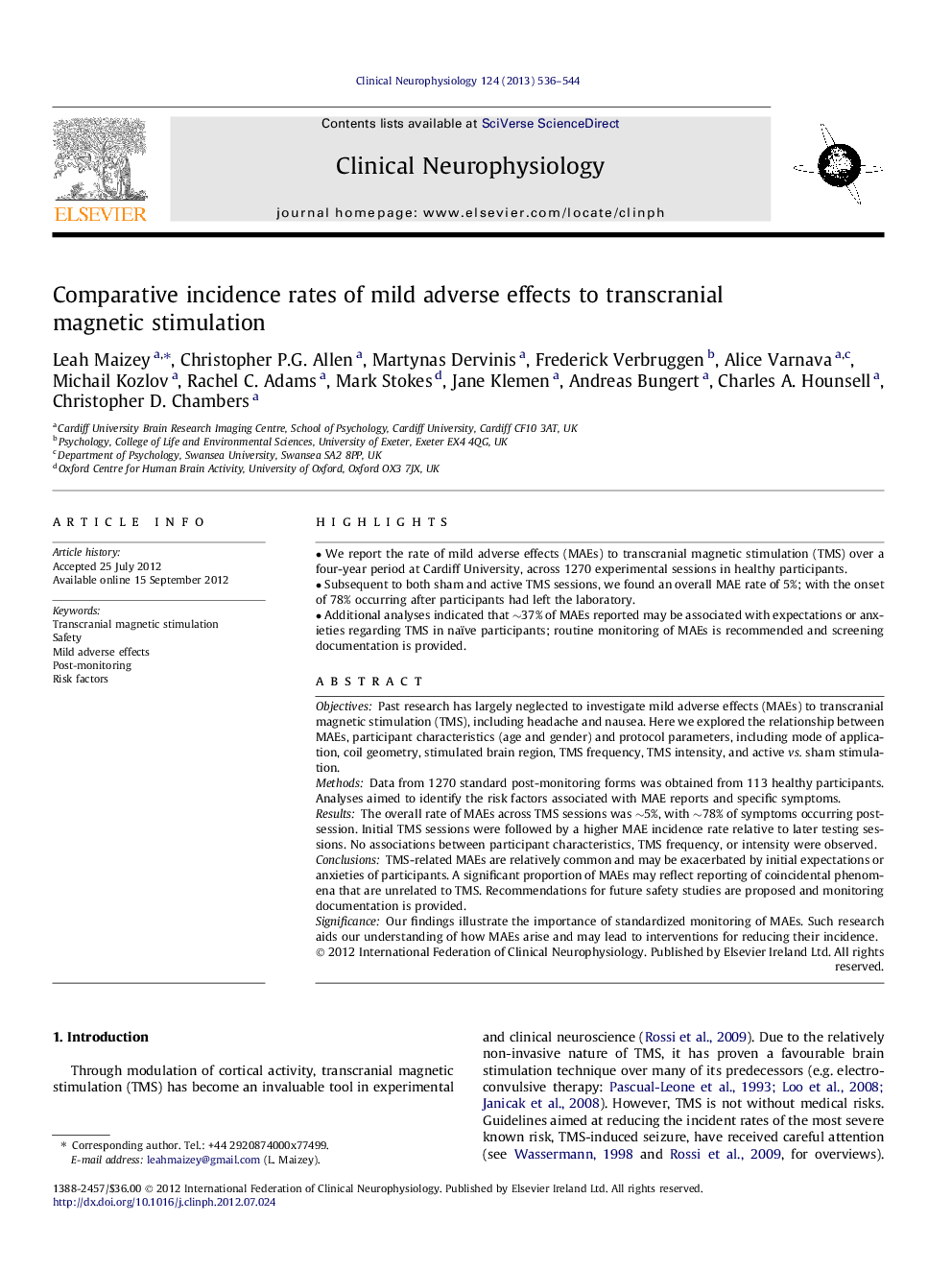| Article ID | Journal | Published Year | Pages | File Type |
|---|---|---|---|---|
| 3044366 | Clinical Neurophysiology | 2013 | 9 Pages |
ObjectivesPast research has largely neglected to investigate mild adverse effects (MAEs) to transcranial magnetic stimulation (TMS), including headache and nausea. Here we explored the relationship between MAEs, participant characteristics (age and gender) and protocol parameters, including mode of application, coil geometry, stimulated brain region, TMS frequency, TMS intensity, and active vs. sham stimulation.MethodsData from 1270 standard post-monitoring forms was obtained from 113 healthy participants. Analyses aimed to identify the risk factors associated with MAE reports and specific symptoms.ResultsThe overall rate of MAEs across TMS sessions was ∼5%, with ∼78% of symptoms occurring post-session. Initial TMS sessions were followed by a higher MAE incidence rate relative to later testing sessions. No associations between participant characteristics, TMS frequency, or intensity were observed.ConclusionsTMS-related MAEs are relatively common and may be exacerbated by initial expectations or anxieties of participants. A significant proportion of MAEs may reflect reporting of coincidental phenomena that are unrelated to TMS. Recommendations for future safety studies are proposed and monitoring documentation is provided.SignificanceOur findings illustrate the importance of standardized monitoring of MAEs. Such research aids our understanding of how MAEs arise and may lead to interventions for reducing their incidence.
► We report the rate of mild adverse effects (MAEs) to transcranial magnetic stimulation (TMS) over a four-year period at Cardiff University, across 1270 experimental sessions in healthy participants. ► Subsequent to both sham and active TMS sessions, we found an overall MAE rate of 5%; with the onset of 78% occurring after participants had left the laboratory. ► Additional analyses indicated that ∼37% of MAEs reported may be associated with expectations or anxieties regarding TMS in naïve participants; routine monitoring of MAEs is recommended and screening documentation is provided.
